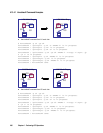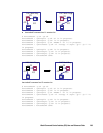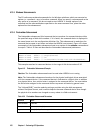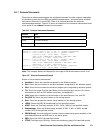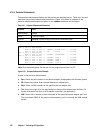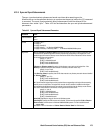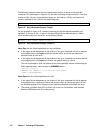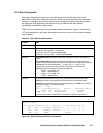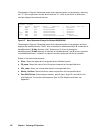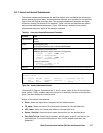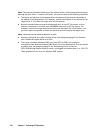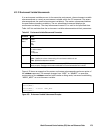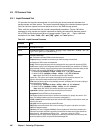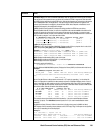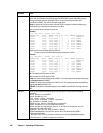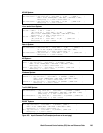
276 Chapter 4 Performing CCI Operations
The example in Figure 4.56executes mount from command opt
ion of the pairsplit, mounting
the “F:” drive to partition1 on disk drive2 and the “G:” drive to partition1 on disk drive1,
and then displays the mounted devices.
pairsplit -x mount F: hdisk2
pairsplit -x mount
Drive FS_name VOL_name Device Partition ... Port PathID Targ Lun
C: NTFS Null Harddiskvolume1 ... Harddisk0
F: NTFS Null Harddiskvolume2 ... Harddisk1
D: NTFS Null Harddiskvolume3 ... Harddisk2
D:\hd1 NTFS Null Harddiskvolume4 ... Harddisk3
D:\hd2 NTFS Null Harddiskvolume5 ... Harddisk4
G: NTFS Null HarddiskDmVolumes\…\Volume1 ... Harddisk5[3]
Figure 4.57 Mount Subcommand Example for Windows 2008/2003/2000
The example in Figure 4.57executes mount from command option of the pairsplit and then
displ
ays the mounted devices. The F: drive is mounted to harddiskvolume2, D: is mounted to
harddiskvolume3, D:\hd1 directory (‘hd1’ directory on D: drive) is mounted to
harddiskvolume4, D:\hd2 directory is mounted to harddiskvolume5, and G: drive is mounted
to harddiskDmVolumes\…\Volume1 for spanned volume configured with three harddisks
Output of the mount subcommand:
Drive: Shows the logical drive recognized by the Windows system
FS_name: Shows the name of the file system formatted on the specified drive
VOL_name: Shows the volume label name for the specified drive
Device, Partition: Shows the device name and partition for the specified drive
Port,Phid,Tid,Lun: Shows the port number, path ID (bus), target ID, and LUN for the
specified drive. For further information on fibre-to-SCSI address conversion, see
Appendix C.



